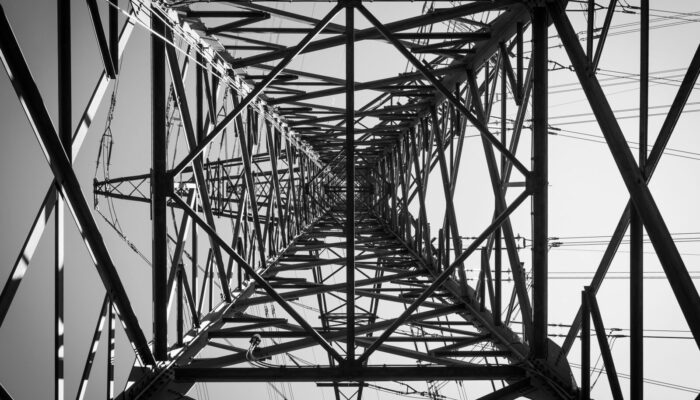
On April 28, 2025, the Iberian Peninsula experienced an unprecedented power outage that plunged Spain and Portugal into darkness for hours. This large-scale blackout disrupted daily life for millions and exposed the vulnerabilities inherent in contemporary energy infrastructures. It also highlighted the critical importance of cross-border energy cooperation in mitigating such crises. In a striking example of regional solidarity, Morocco emerged as a pivotal player by supplying emergency electricity to Spain, underscoring the potential of international collaboration in enhancing urban resilience and energy security (International Energy Agency, 2025).
The blackout: A wake-up call
The blackout commenced at 12:33 PM local time and resulted in the instantaneous loss of approximately 15 gigawatts, which represents around 60% of Spain’s national electricity demand, within just five seconds. The sudden collapse of supply triggered widespread disruptions: trains halted mid-journey, air traffic was delayed, and digital communication networks became unreliable. Essential services, including hospitals and emergency response units, operated on backup generators, but for millions of citizens, daily activities came to a standstill.
Subsequent investigations identified that a cascade of generation trips -instances where power plants automatically shut down due to faults or imbalances- in southern Spain, likely exacerbated by high temperatures and fluctuating renewable generation, had caused a major imbalance between electricity supply and demand. Protective mechanisms activated, leading to automatic disconnections across the grid to prevent equipment damage. This event starkly revealed the fragility of national grids, especially those heavily reliant on intermittent energy sources and aging infrastructure (European Network of Transmission System Operators for Electricity [ENTSO-E], 2025).
What went wrong?
When analysing the available data from Red Eléctrica de España (REE) between 12:30 and 12:35, several anomalies become evident. Just minutes before the blackout, fluctuations were observed in the grid. Notably, there was a sudden spike in wind power generation, which had been low earlier that day. Simultaneously, France abruptly stopped importing electricity from Spain, likely in response to detected instability in the peninsular grid. This action further deepened the supply-demand imbalance.
At this point, the few remaining operational nuclear power plants in Spain received overload signals. Following safety protocols, they automatically shut down by inserting control rods. This reduced base-load capacity at a critical moment. Even more perplexing was the behaviour of solar photovoltaics. Within seconds, generation dropped from 18,000 MW to 8,000 MW. Given that weather conditions hadn’t changed dramatically, the most plausible explanation is an automated command that switched off thousands of solar facilities.
REE sources suggest that the initial trigger may have been the disconnection of solar plants in southwest Spain. While the grid normally compensates for such events using regulation mechanisms (primarily hydropower) hydropower alone eventually exhausted its adjustment capacity.
This sequence of events reveals a deeper systemic issue: grid synchronisation. All generation sources must operate at the same frequency (50 Hz) (you can read more here on the dangers of overlooking the gird frequency stability) Stable base-load power, typically provided by nuclear, gas, or large hydro facilities, is essential for this synchronisation. These base-load sources buffer the grid against disturbances. The sharp drop in base-load and the unpredictability of renewables resulted in the grid becoming desynchronised, forcing a widespread shutdown to avoid catastrophic damage.
Morocco’s timely intervention
Amidst the chaos, Morocco’s rapid intervention played a critical role in stabilising Spain’s grid. Leveraging the Spain-Morocco electricity interconnection, which is a submarine power cable linking Tarifa, Spain to Fardioua, Morocco, Morocco supplied up to 900 megawatts of electricity to Spain. This emergency provision represented approximately 38% of Morocco’s national electricity production capacity at the time (Office National de l’Électricité et de l’Eau Potable [ONEE], 2025).
The interconnection infrastructure, initially commissioned in 1997 and expanded in 2006, consists of two 400 kV high-voltage direct current (HVDC) lines, boasting a combined transfer capacity of 1,400 MW. Energy can flow in both directions which enables Spain and Morocco to support each other depending on grid conditions. Notably, construction plans for a third 400 kV cable are well underway, aimed at increasing transmission capacity to 3,000 MW by 2027, thereby enhancing resilience and enabling deeper regional energy integration (World Bank, 2024).
This episode demonstrated the strategic importance of cross-border interconnections, which not only facilitate energy trade during normal conditions but also provide critical emergency support in times of crisis.
Renewable energy and grid stability
Spain has been lauded for its aggressive push towards renewable energy, achieving a renewable energy share of 58.95% in its electricity mix by 2025 (Pexapark, 2025). However, the blackout reignited concerns regarding the grid stability challenges posed by intermittent renewable sources like wind and solar power. These sources, by their nature, are variable and less predictable, requiring sophisticated grid management techniques, energy storage solutions, and backup generation capacity to maintain a stable supply.
The incident has also reopened debates around Spain’s ongoing plan to phase out nuclear energy. Critics argue that nuclear plants provide consistent baseload power that is essential for grid stability, warning that an over-reliance on intermittent renewables could exacerbate vulnerability to large-scale outages (Nuclear Energy Agency [NEA], 2024). This suggests a need for a diversified and balanced energy mix to support both the energy transition and system resilience.
Morocco’s renewable energy leadership
Morocco’s effective response during the Iberian blackout reflects its growing strength in the renewable energy sector. By 2025, Morocco had achieved a renewable energy capacity of approximately 12 gigawatts, with significant investments in solar and wind technologies.
One of Morocco’s flagship projects, the Ouarzazate Solar Power Station (Noor Complex), exemplifies its leadership. As the world’s largest concentrated solar power (CSP) facility, it features a total installed capacity of 510 MW and incorporates molten salt storage, enabling electricity production even after sunset—an innovation crucial for addressing the intermittency challenges of solar power (World Bank, 2023).
Beyond Noor, Morocco has committed to ambitious energy goals, aiming for renewables to constitute over 52% of its installed capacity by 2030, supported by initiatives such as the Moroccan Integrated Wind Energy Program and new solar projects under the Noor Solar Plan.
Implications for urban resilience
The 2025 Iberian blackout serves as a powerful reminder of the interconnectedness of modern energy systems and the urgent need for resilience in urban planning. Cities must go beyond merely expanding renewable energy capacity; they must also invest in the underlying infrastructure—such as smart grids, energy storage systems, and flexible generation assets—that can enhance system stability (United Nations Habitat, 2023).
Enhancing interconnection capacities not only supports renewable energy integration but also fosters a more resilient and flexible transnational grid. For instance, the European Union’s “Energy Union” strategy emphasises building a fully integrated and interconnected European energy market to improve security and resilience.
“The EU concluded a Green Partnership with Morocco on the occasion of Executive Vice-President Timmermans’ visit to the Kingdom of Morocco on 18-19 October 2022. This is the first such EU initiative with a partner country to advance the external dimension of the European Green Deal through action on the ground. Joint work and cooperation shall be developed across three main thematic axes: climate and energy; the environment, including marine and maritime issues, and the green economy.” (read more here)
Moreover, the blackout demonstrates the necessity of international cooperation. Morocco’s assistance to Spain is a model of how cross-border collaborations can cushion national systems against localised failures. Such partnerships will become increasingly vital as climate change intensifies and energy systems face greater stress from extreme weather events and rising demand.
Conclusion
The 2025 Iberian blackout was more than a temporary disruption; it was a clarion call to reevaluate energy resilience strategies in an era of deepening interdependence. As some countries pursue aggressive renewable energy targets, they must also prioritise grid stability and resilience. Morocco’s pivotal support to Spain during the blackout highlights the transformative potential of international energy partnerships. Moving forward, building resilient urban energy systems will demand a holistic approach, one that combines technological innovation, strategic infrastructure investments, diversified energy portfolios, and cross-border collaboration.




